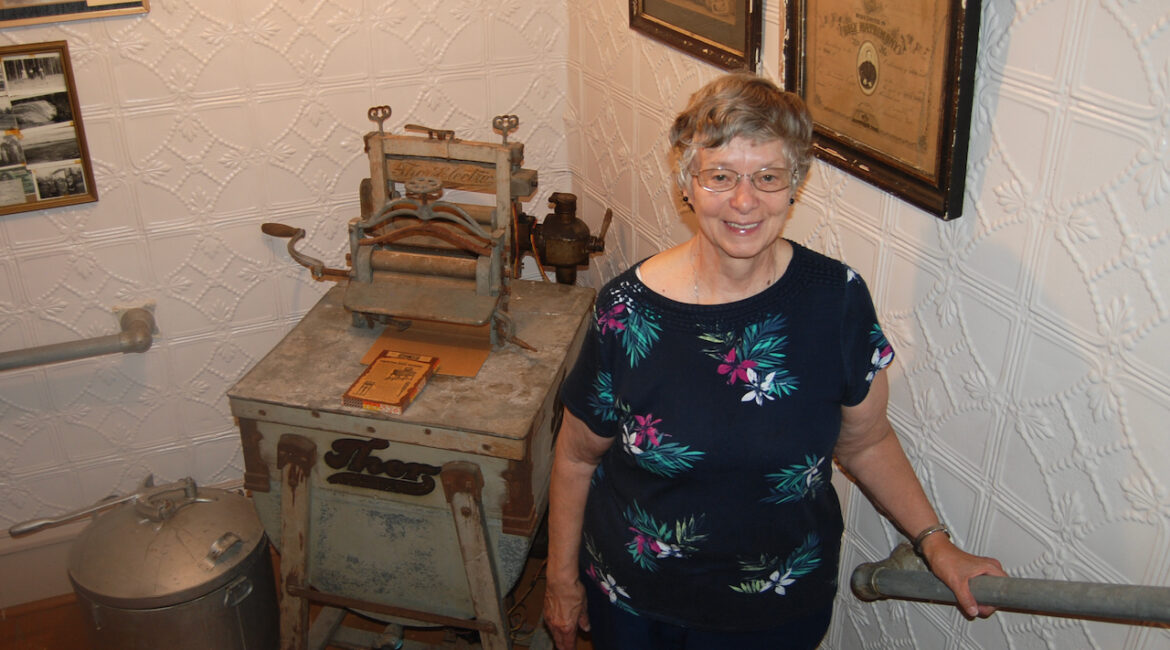Correction: The Town Hall Museum will next open Sunday, July 31, and not July 24 as earlier stated. Fort Atkinson Online regrets the error.
By Kim McDarison
An eclectic mix of more than 2,000 artifacts awaits visitors to the Town Hall Museum, Hebron.
Everyday items, such as furnishings and children’s toys, to yesteryear contrivances like old-fashioned horse-drawn sleights, washing machines and farm implements, bring tangibility to a historical spectrum of life in a small American community.
Depictions of life in the area known today as Hebron and Cold Springs, with some parts of each once known as “Bark River Township,” according to museum literature, date back as far as 1836, when claim shanties were build in the area, museum curator and President of the Bark River Woods Historical Society Olive Gross said.
As of the 2010 census, the two communities combined have a population of just under 2,000 residents.
The society owns and operates the museum, Olive said.
She and her husband, Don, who serves the society as its treasurer, along with other board members and volunteer docents, can be found in the building on select Sundays during the summer months, where they enjoy meeting visitors and sharing their community’s history.
The museum will next open between 1 and 4 p.m. on the following Sundays: July 31 and Aug. 28.
Admission is free, but donations are appreciated, Olive said.
The museum, W3087 Green Isle Dr., is situated near the intersection of State Highway 106 and County Highway D, some eight miles east of Fort Atkinson.
Caring, alongside of their neighbors, for the community’s history has been a labor of love for the couple. Olive has served as the society’s president since 1993 and Don was installed as treasurer in 2010.
Both Olive and Don are replete with stories about those who helped build and form the area. Olive is a native and Don arrived in the 1950s as a small boy. Both grew up on dairy farms, the couple said. They met in grade school and married in 1968.
Olive caught the history bug first, she and Don agreed. Olive cited the 1977 TV mini series “Roots” as a sort of inception point.
After watching the mini series, she became interested in her own family history and began researching her genealogy at the Hoard Historical Museum in Fort Atkinson.
As she researched, she discovered that her paternal great-great-grandfather, James Wenham, arrived in Hebron circa 1850, she said.
Don said he took up the passion alongside of his wife, and has enjoyed helping with the society and various tasks associated with the museum ever since.
The Bark River Woods Historical Society was organized in 1976 as a bicentennial project by 10 citizens of Hebron, Olive said.
After it formed, the group began collecting artifacts.
“That was before we had the museum. People donated artifacts and board members stored them until they could be placed on display in the museum,” Olive said.
A collection finds a home
Built in 1902 as a town hall, changes made to the purpose of the building which today serves as the museum began in the early 1980s, when the Hebron area was consolidated into the School District of Fort Atkinson, and another building, which then served as the community’s schoolhouse, was closed. Students who had formerly attended the schoolhouse began attending schools in Fort Atkinson, Olive recalled.
Of the building that serves today as a museum, Olive said: “I remember it being a town hall. The town board met here.”
The building also was used to host wedding receptions and dances.
A stage on the building’s second floor was used by Hebron students to hold an annual Christmas play, and the community 4-H club put on plays, she said.
Orchestras also were hosted, and the community’s women’s club held meetings and card parties.
When the district closed the community schoolhouse, the Hebron town board made the decision to move its offices from the 1902-build town hall building to the former schoolhouse, leaving the town hall vacant, she said.
Today, the former schoolhouse serves as the town hall and a community center, Olive said.
Soon after the old town hall was vacated, the historical society began exploring the idea of occupying the building and creating a museum. An agreement was formed, allowing the society to rent the building.
In the mid-1980s, Olive recalled, the society purchased the two-story, nearly 5,000-square-foot building for $10,000.
In 2002, she said, the building was added to the National Register of Historic Places by the United States Department of the Interior.
Today, the society’s collection is displayed in a meticulously kept building. Tin tiling covers the ceilings and the walls, and, while original to the building, it is presented in glistening, like-new fashion.
Bathrooms were added to the structure in the 1960s, Olive said.
In 2001, Don said, a pole structure today called the Charles and Ruth Rockwell Memorial Building, was erected on the property to house agriculturally based artifacts. The collection includes a turret and myriad farm tools.
The Bark River Woods Historical Society holds an annual fundraiser called the Old-Fashioned Pie and Ice Cream Social, with those proceeds used to support the museum’s maintenance, Olive said.
“Our purpose is to educate today’s generation about the past and to preserve local history for future generations,” a museum brochure states.
When visitors arrive, Olive said, many of whom come from other parts of the state, including Milwaukee, “they are quite impressed with the building. They are impressed that we are a small society and with all the things we have. People that come are often fascinated by the sleighs and the stage curtains,” Olive said.
Looking back at the time spent building the museum and its importance to the community, Olive said: “To me, it tells a story of the area of two townships and the areas around them. People need to see what the past was like in order to plan for the future. To me, it’s important to preserve history for the future. And there are a lot of memories here for me from growing up. It’s an opportunity to talk about the people that we know and it attaches me to my roots.”
Said Don: “I enjoy showing some of the unusual items and getting people to guess what they are. And then I tell them what they are and they are actually quite amazed.”
Collection highlights
Artifacts big and small occupy nearly every nook and cranny of the museum. Some are reminiscent of when the building served as a town hall.
Featured on the building’s main floor are two horse-drawn sleights, one of which was donated to the museum by the Hoard Historical Museum in Fort Atkinson, Olive said.
According to information on display near the sleighs, one of them is similar to a sleigh known as the No. 2 Portland style, which was advertised in the Northwester Manufacturing Company’s 1905-1906 catalogue. The Northwester Manufacturing Company was begun by Joseph Powers of Hebron.
Powers moved his small furniture factory to Fort Atkinson in 1866. The company employed 250 people. It acquired several buggy and sleigh companies in 1879. The company also expanded its manufacturing line to include wagons. The company closed its doors in 1929, having suffered losses due to the Great Depression. With the exception of a small office building, the company’s facilities were demolished in 1960, the information stated.
Artifacts from another prominent area figure, Dr. Frank Brewer, are on display.
Brewer was a general practitioner in Fort Atkinson, Olive said.
He married into the Hoard family in the late 1880s, and while he practiced in Fort Atkinson, he lived in Hebron, Olive said.
“We have a lot of his medicine bottles and books,” Olive noted.
Also on display is a collection of military uniforms and artifacts from various periods throughout history.
The museum is also home to a collection of artifacts from the Wintermute Circus, which, Olive said, wintered in the area.
The couple encourages visitors to find a docent when they visit and ask questions.
Docents are eager to tell the stories about Hebron and its people, Olive said.
Along with scheduled Sundays, the museum opens by request, Olive said. She and Don enjoy giving tours.
Additional information about the museum is available on the Bark River Woods Historical Society’s Facebook page.
To learn more or schedule tours, call: 920-563-4773 or email: gross622@gmail.com.
An earlier story about the annual Old-Fashioned Ice Cream Social is here: https://fortatkinsononline.com/pie-by-the-slice-auction-slated-hebron-town-hall-museum-open-house-dates-announced/.
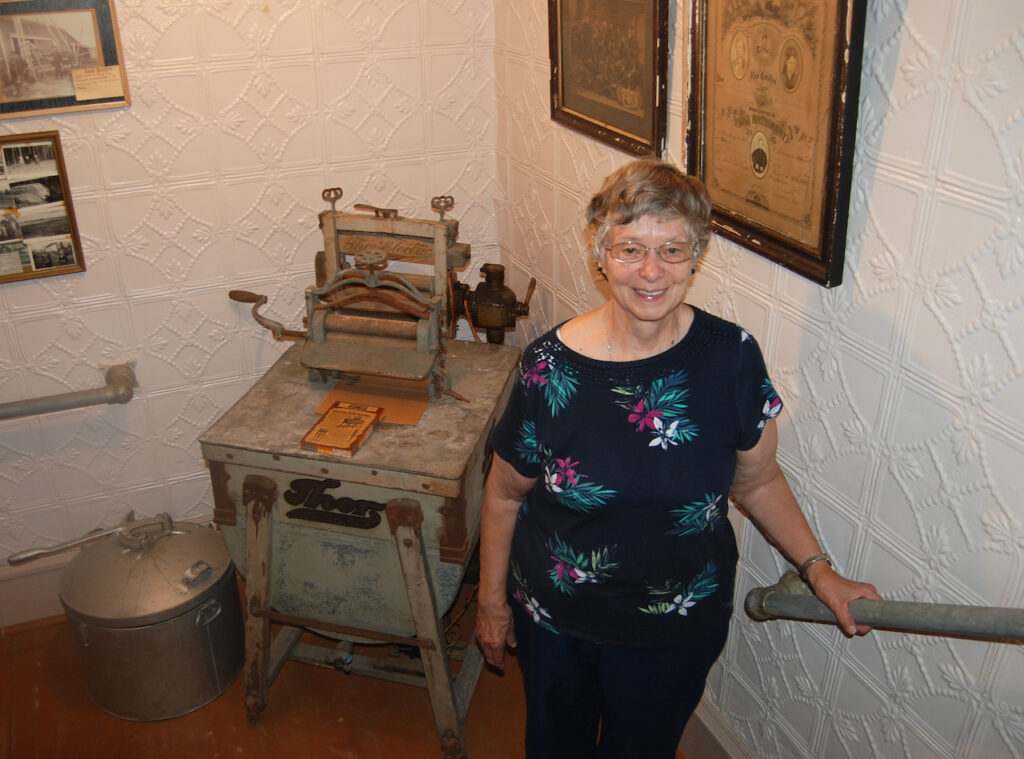
Olive Gross, president of the Bark River Woods Historical Society, moves through a small landing between the first and second floors as she ascends to the second floor of the Town Hall Museum, Hebron. Nearly every space within the two-story museum is used to display artifacts.
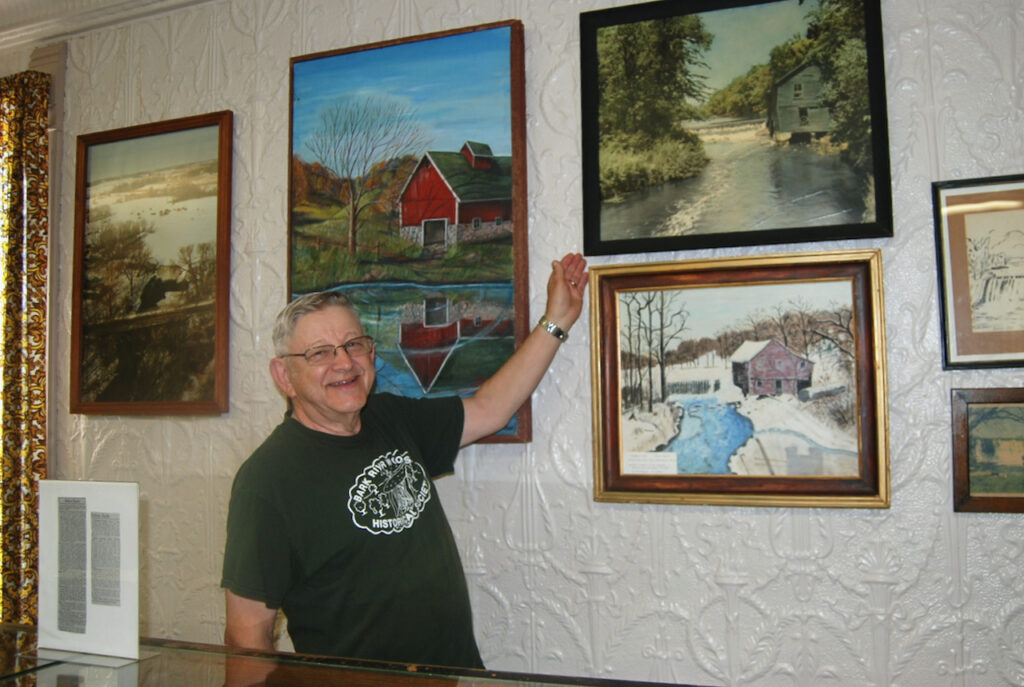
Don Gross, treasurer of the Bark River Woods Historical Society, points to various paintings depicting buildings of prominence which once dominated the area landscape.
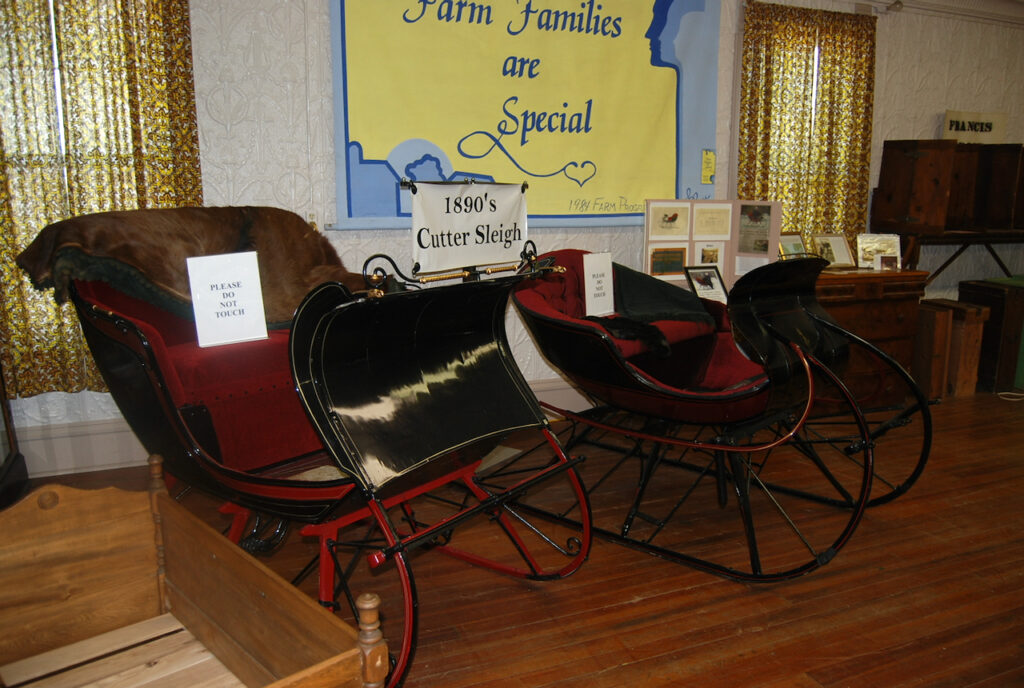
Two sleighs are among artifacts displayed on the museum’s first floor. A history of a former Fort Atkinson-based furniture and sleight manufacturer is part of the display. The owner of the company lived in Hebron. The company opened in 1866 and closed in 1929.
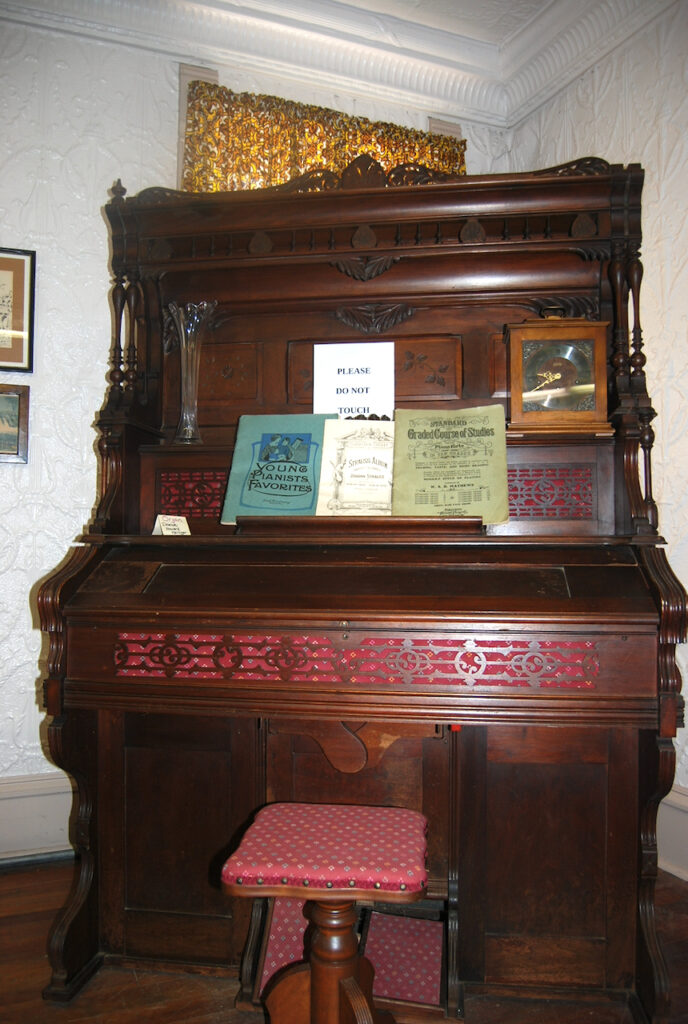
An ornate piano stands among a collection of instruments housed on the museum’s first floor.
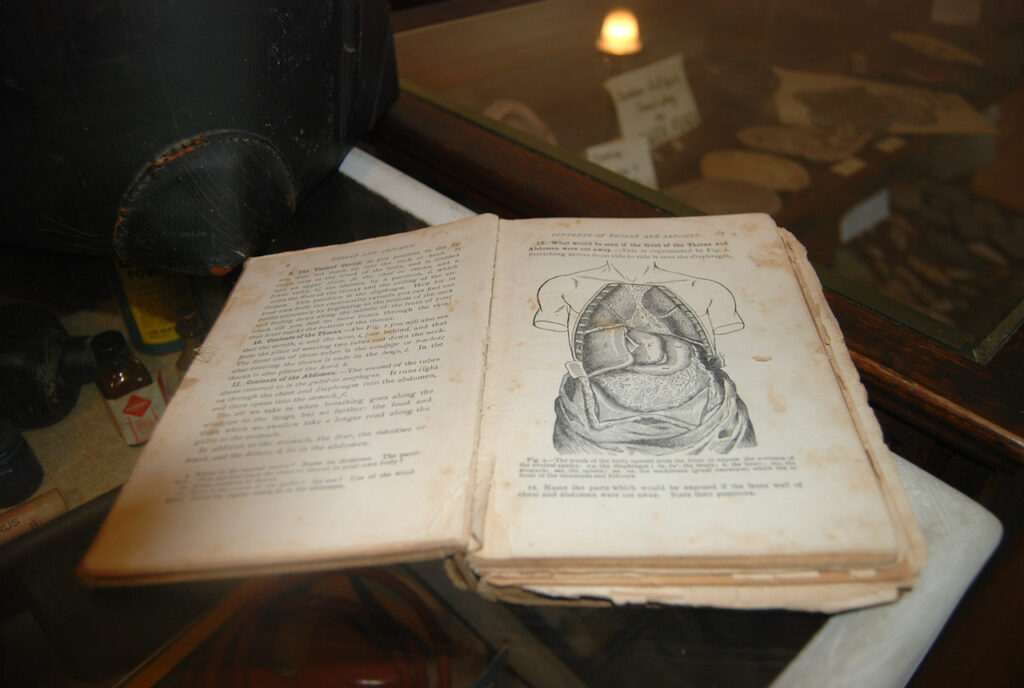
A medical book is displayed among several artifacts donated to the museum which once belonged to Dr. Frank Brewer, who was a member through marriage of the Hoard family and practicing in Fort Atkinson. The doctor lived in Hebron.
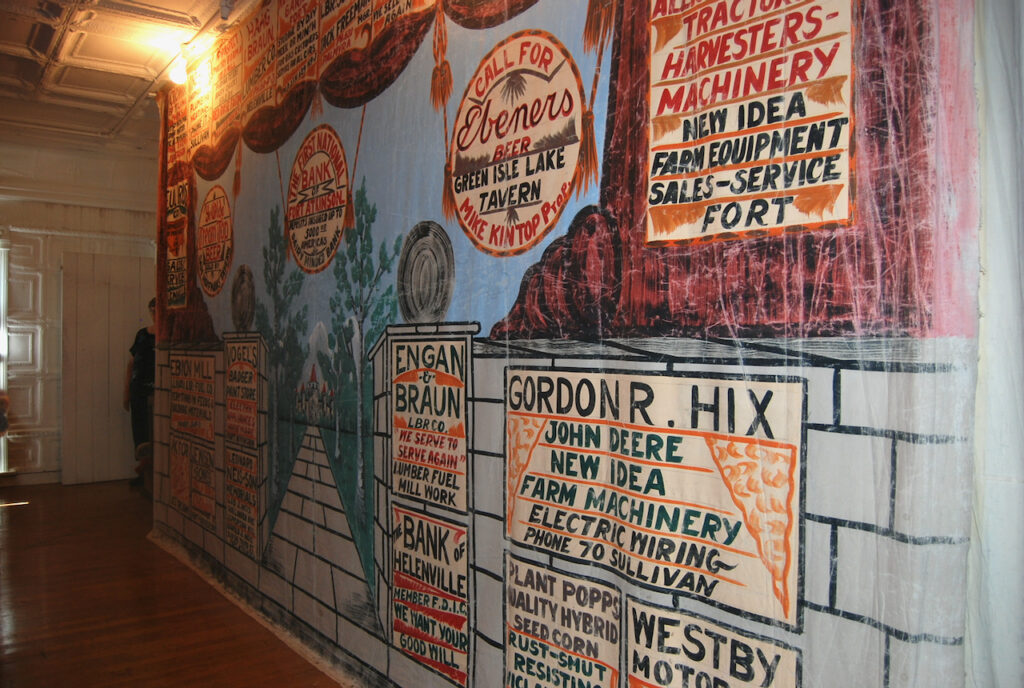
A curtain, used during performances when the museum building served as a town hall, hangs behind the stage on the museum’s second floor. The curtain is one of two on display.
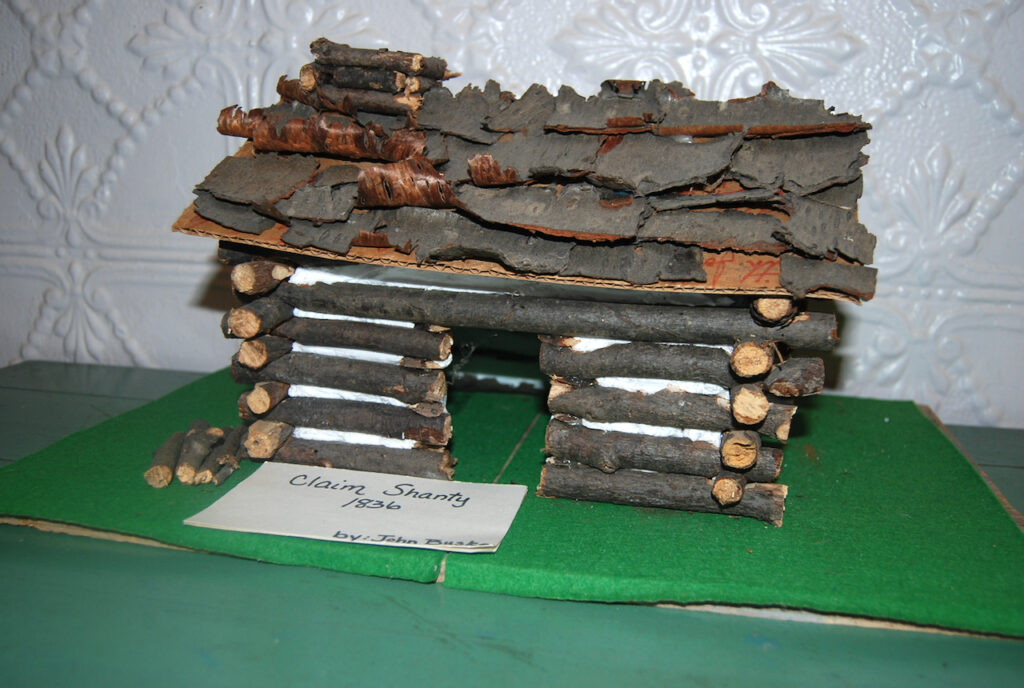
A youngster’s model of an 1836-built claim shanty is on display. The model was built by John Buske.
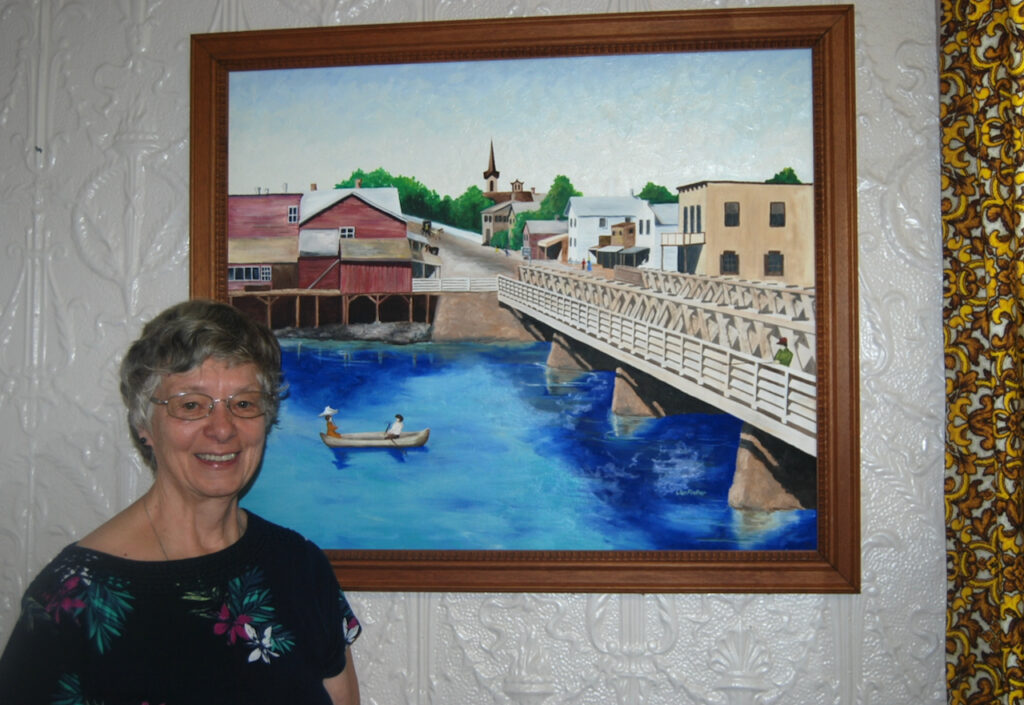
Olive Gross, curator of the Town Hall Museum and president of the Bark River Woods Historical Society, shares information about a painting by artist Jan Foelker. The work is among several gracing the walls at the museum. Foelker’s painting depicts the Main Street bridge in Fort Atkinson.
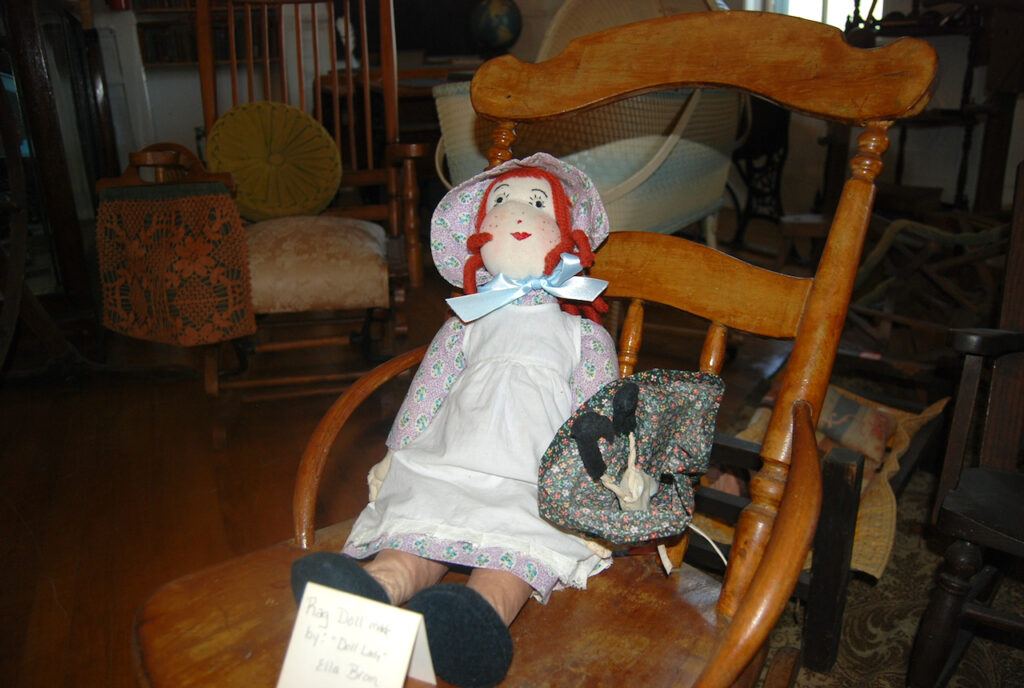
A child’s doll lends personality to the museum’s furniture exhibit.
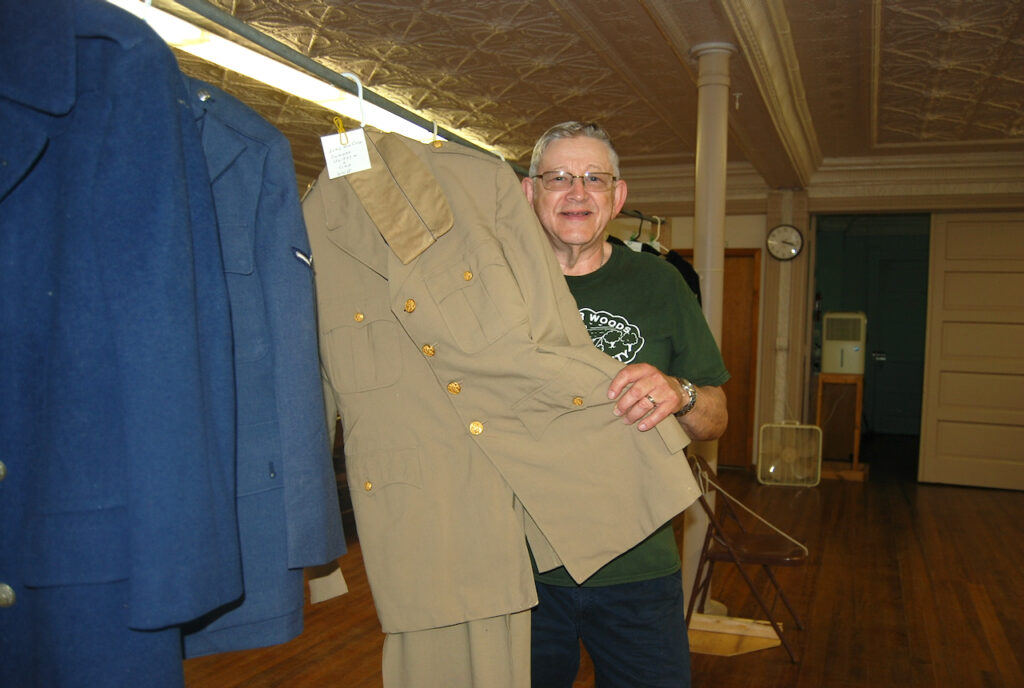
Don Gross, society treasurer and volunteer docent, displays one of several uniforms presented among military artifacts.
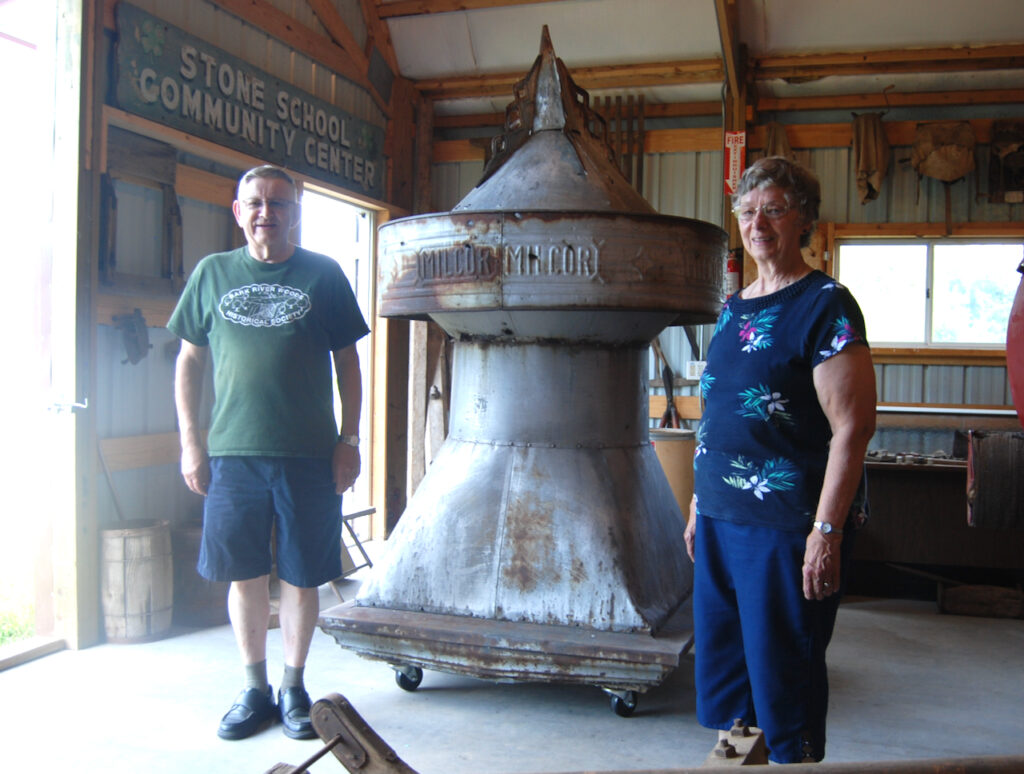
Don and Olive Gross present items on display in the Charles and Ruth Rockwell Memorial Building used to house agriculturally based artifacts. The building was added to the museum property in 2001.
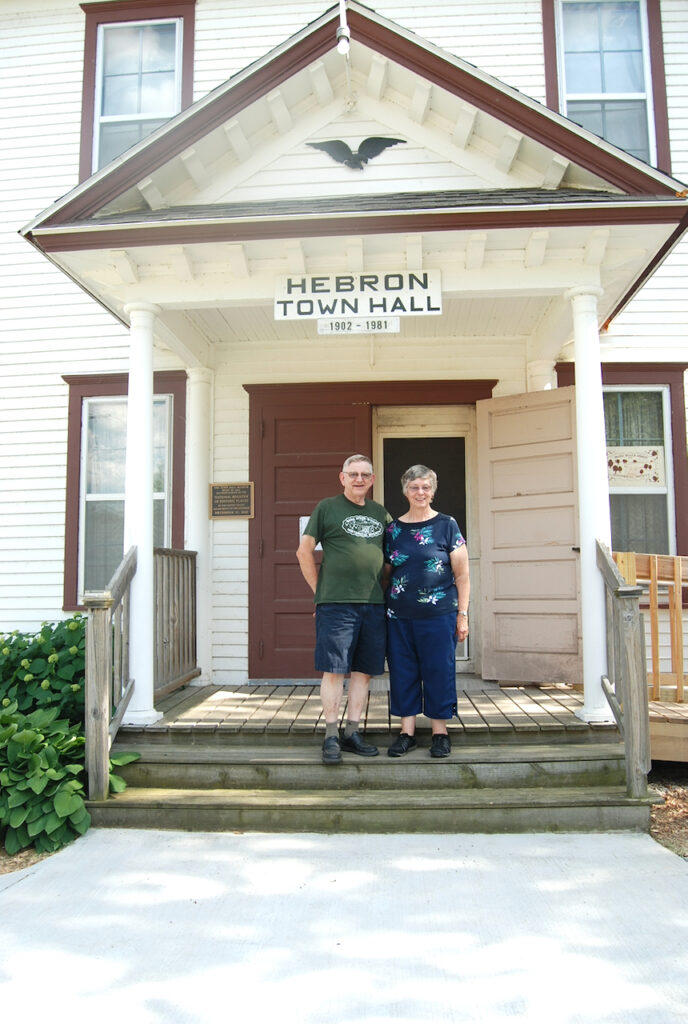
Don and Olive Gross stand in the entryway of the Town Hall Museum, Hebron. The museum opens by appointment and on designated Sundays during warm-weather months. It will next open on July 31, from 1-4 p.m.
Kim McDarison photos.
This post has already been read 3111 times!
